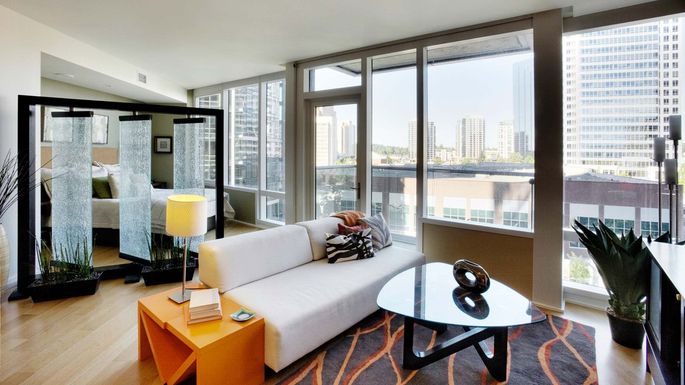
It may be unnecessary for me to point out that the current movement towards “small houses” and minimalist style has almost everyone Marie Kondo-ing their homes, spaces, and lives. As more and more of us see value in living in less, the Senior Housing industry continues to see families who are looking for ample square footage, multiple bedrooms and baths for their loved ones, and on-site storage for holiday, seasonal, and overflow. I get it. When our loved ones take are transitioning to a senior living community, they are also transitioning from years and years of rooms and rooms. They probably worked their whole lives to pay off the mortgage on that home. They may have to raise you there. So giving it up is not easy, but it is separate from the challenge of wrapping your head around the stuff.
More often then not, the families I work with are looking for something that will feel less drastic of a change when they are focusing on what size space their loved one should look for. I have seen some families select a two bedroom two bath apartment for their mother just because she was coming from a four bedroom home and they didn’t want her to feel like she didn’t have any space.
Here’s the thing. When a loved one moves to a senior living community, they are actually renting a mansion. The apartment that they (or you) select should be thought of as their bedroom.
One of the primary reasons I advocate for a senior living community (besides providing necessary and quality care of course) is that the socialization and engagement that comes from the type of environment you find in senior living communities fosters relationships, staves off depression and isolation, and even has been linked to lower rates of mortality.

The goal of community life is that your loved one finds or is given a role, a purpose, and a network. A truly excellent community will begin identifying these things during (and sometimes even before) your visit. When you are looking for a community, you should listen to how the team envisions your loved one taking on a role within the community, not how the existing programs and residents will be a good fit. Once this is identified and your loved one moves in, if the leadership and front-line teams are able to deliver on this, you will rarely find your loved one spending time in their apartment.
And thus, you find me at the front of the parade celebrating the studio apartment. Sure, it is not for everyone right away. I have had many families and prospective residents walk into a studio and immediately say “no way”, only to move into a one bedroom apartment and six months later request the next studio that opens. Why? Because not only will you get the best deal on this size apartment, but this size apartment will also encourage your loved one to think of the entire community as their home. You do not need a den when you have eight outside your bedroom door. You don’t need a full kitchen when you have a personal chef and three dining venues within a three minute walk.

Not only does a studio apartment encourage residents to be out in the community and engaged, it also completely smashes the illusion that living at a community is like living in an apartment building, because it’s not. Sure, we call them apartments, and they should certainly feel that way; private, personal, and enough, but the lifestyle of a community is much different than that, not just in amenities, but in possibilities.
The defining fight of my career is to get people to re-imagine the chapter of their lives that begins with the thought of a community. I loathe the phrases like “put me in a home” or “send me away” or even “one of those places”. Not only do I think it’s misinformed and based on some tableau vivant from their childhood, visiting a grandparent in a skilled nursing home, but I also think it’s a reactionary and irresponsible response to poor planning. We know nine out of ten of us will need the support of some form of senior living community, yet we imagine that we would rather die or spend our families out of hearth and home by demanding expensive in home care and modifications, than to take responsibility for designing what we want that chapter to look like.
I can go on forever about how wildly misunderstood senior living communities are to those who aren’t working or living in them, but that’s not the point. The point is, when we consider a community for ourselves or a loved one, we need to recognize we are not just considering space, we are considering lifestyle. It will be different. It will be hard (at first). It will be a change. But, it can be the most unexpectedly beautiful gift we give to our loved ones and ourselves if we are able to celebrate it for what it is… a lifestyle, a new chapter, and an opportunity.
As always, if you need additional support, resources, or someone to talk to, reach out. allie@brandywine-concierge-senior-services.websitepro.hosting

